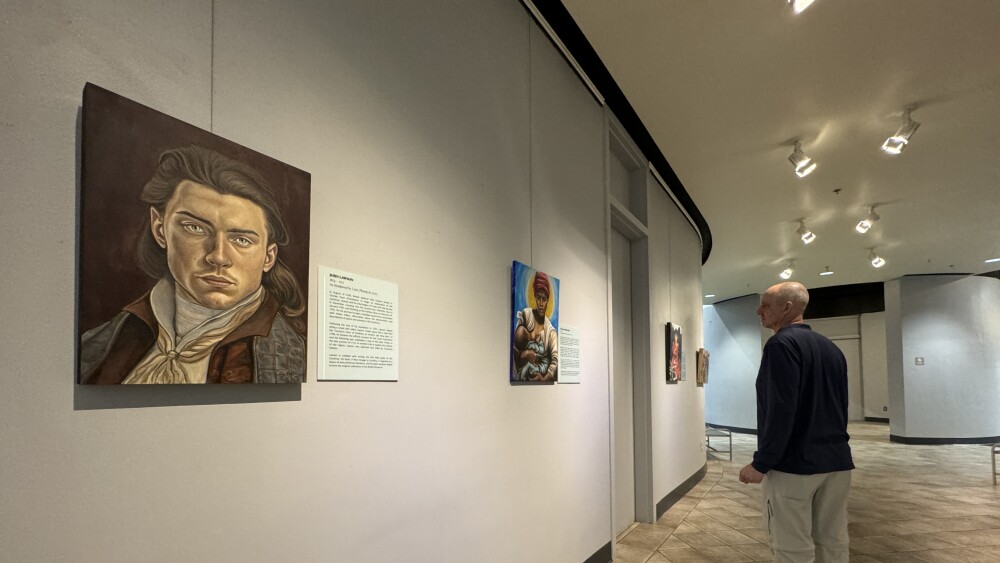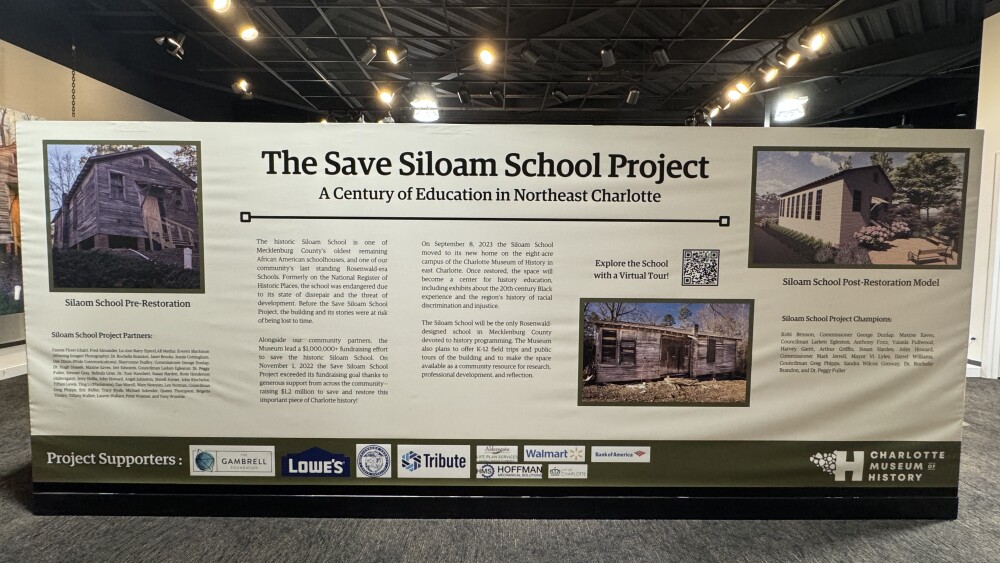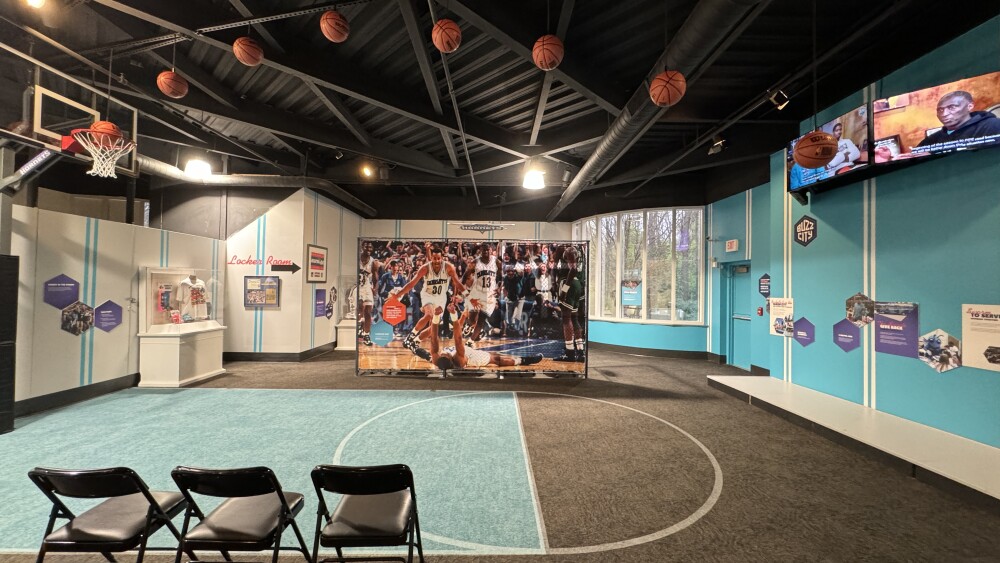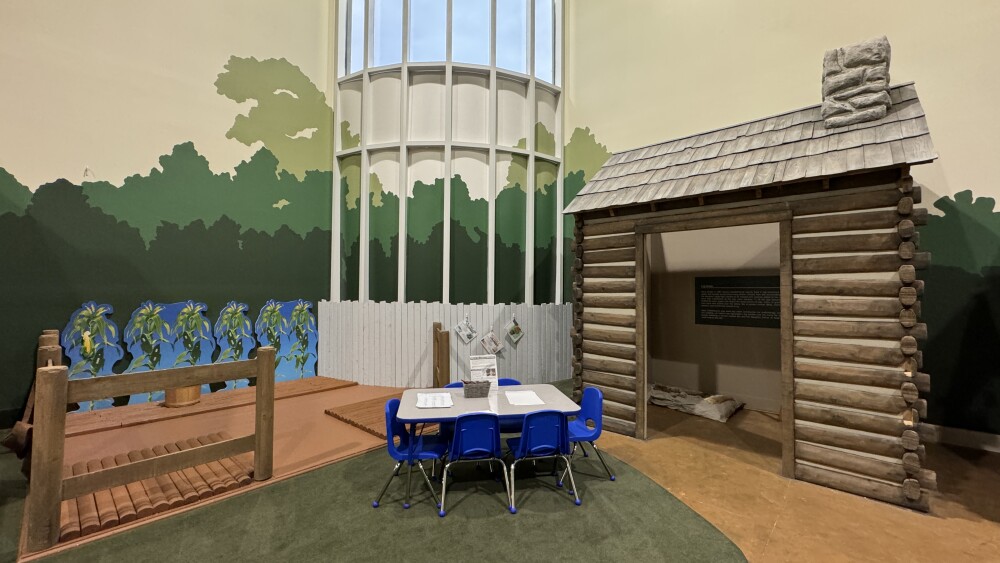When Charlotte was founded, it’s unclear if settlers knew how historic this city would become. But it is, and that’s what we’re digging through.. The city has several museums showcasing the arts, sciences, and culture. One is the Charlotte Museum of History.
Tucked away on Shamrock Road in east Charlotte, the grounds are beautiful and the interior is mind-blowing. The museum is the steward of the 1774 Hezekiah Alexander Rock House, the oldest home in Mecklenburg County. CMH has four halls and gallery spaces for traveling and permanent exhibitions.
Path of Portraits
The first hall you’ll notice houses the Path of Portraits. It’s an ongoing project with Charlotte creatives to paint the faces of people whose stories in history may not be well-known. Some date back to the 1700s. The first two you’ll notice, John Lawson + Nance and her child.
“Lawson was kind of one of the early explorers of the Carolinas before there was really any settlement here,” says Mea Agazio, the Education & Engagement Manager at Charlotte Museum of History. “He wrote A New Voyage to Carolina, documenting the wildlife, the surrounding areas, the people, and indigenous nations. We still use his writings to kind of learn a little bit more about what Indigenous life was like before pre-colonization.”
The portrait of Nance is breathtaking in person. The reimagination presents a woman in motherhood but also embodies strength and being.
“Nance was an enslaved woman here on our home site. We know from documents that she had three kids while she was enslaved here. That’s the only documentation that we have of her. But she was more than a mother, an enslaved person. She was powerful. I think that holds a lot of weight,” said Agazio.
The Path currently has a dozen portraits with hopes to expand in telling all the stories of Charlotte.
Siloam School
The Siloam School is one of Mecklenburg County’s oldest remaining African American schoolhouses. It’s also one of the last standing Rosenwald-Era Schools. Through the use of imagery, blueprints, timelines, and classroom desks, you’ll trace the story of education in the South for Black children.
In its history, it was a single room schoolhouse, a family’s home, and a body shop. The Mallard Creek area’s growth and expansion led the building to become neglected and encroached on by development. Thanks to the Museum’s fundraising efforts, the building was delivered to the Charlotte Museum of History’s grounds in September 2023, where restoration is ongoing.
“It was cool considering the fact that fundraising for the school move was a community effort, in the same way that building the school and fundraising for the construction of the school was a community effort. So literally a hundred years later, we were able to bring the community together,” said Agazio.
Once restoration is complete, the school will open to the public in June. Editor’s note: a full story on that work and the school’s history coming soon.
35 Years of the Charlotte Hornets
Across from the Path of Portraits, you can trace the first 35 years of the Hornets, formerly (and briefly) the Bobcats. This exhibition, in partnership with the team, celebrates the contribution of the Hornets to the Queen City.
In this exhibition, you can compare your height to that of Muggsy Bogues, imagine yourself shooting the series-clinching shot against Boston in the 1993 playoffs, see authentic jerseys, a Hornets cookbook, toys and memorabilia.
There’s even a display dedicated to the Charlotte Sting, the city’s WNBA team. Could we see a resurgence of the Sting anytime soon? This City Editor can hope.
The Children’s Gallery
Otherwise known as the Backcountry Gallery, this area is great for school groups and children’s programming. It shows the evolution of housing, starting with the Catawba Bark House, and traces back to the Alexander Rock House (that story is coming soon). “We use this space to kind of show the evolution of what Charlotte looked like, since students kind of have trouble picturing a Charlotte without roads and tall buildings and cars. People have lived on this land for thousands of years, but it’s just looked different over the years.”
This gallery features colonial-era games, a nod to Charlotte’s mining history, and textile work. “I call it the starting point for Charlotte getting to where it is today, because that’s when you see lots of people coming into Charlotte moving here in droves,” says Agazio.
Open Wide the Door
The most recent exhibition to open at CMH is Open Wide the Door. It tells the story of Carolina-native Mary Cardwell Dawson. Dawson founded the National Negro Opera Company. The exhibition features portraits, intricate costumes, an interactive listing area, and highlights the success of the National Negro Opera Company as it performed in the 1940s.
In a press release, Terri L. White, the Charlotte Museum of History president and CEO, said this exhibition was a longtime coming. “Mary’s contributions to the world of opera were never properly appreciated during her lifetime. The museum is honored to be a part of finally recognizing her visionary legacy here in North Carolina.”
Captured in Cartoons
Cue School House Rock. This exhibition highlights the works of cartoonists in the Queen City, including a recreation of Kevin Sires’ desk, a Pulitzer Prize-winner and longtime cartoonist of “The Charlotte Observer.”
“This exhibit shows, not only the history of cartooning, but also in Charlotte specifically, and how illustrations play to our commentary on social issues and, really anything that can be reported on,” said Agazio.
Overall, CMH is here to tell and preserve the story of Charlotte and its people, from 1767 to present day.
There is so much more for you to explore, but this is just a teaser of what you can expect at the Charlotte Museum of History. Make sure to stop in and check out everything CMH has to offer + if you run into Mea on your visit to the museum, tell her Maria + Jack sent you and say hello. 👋

















